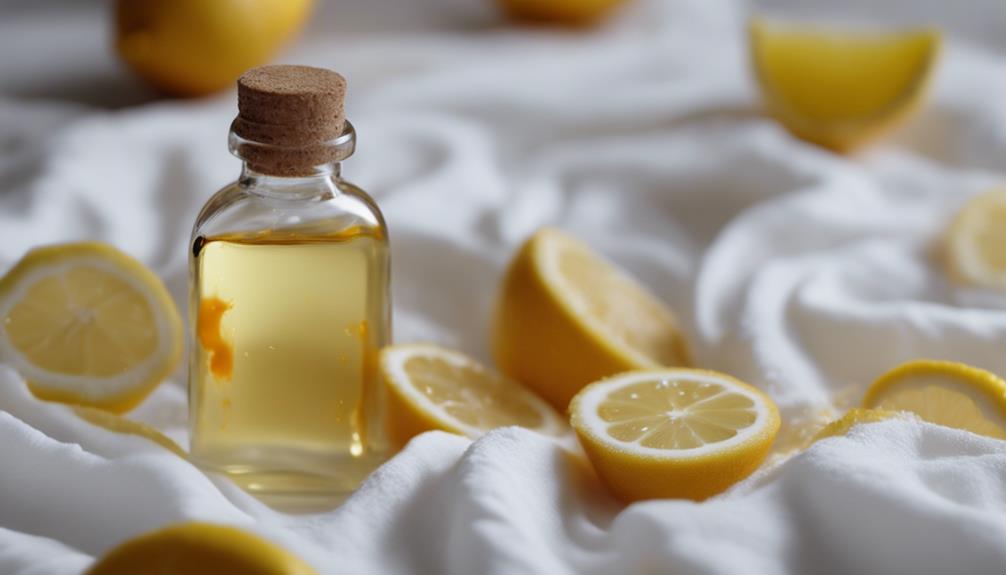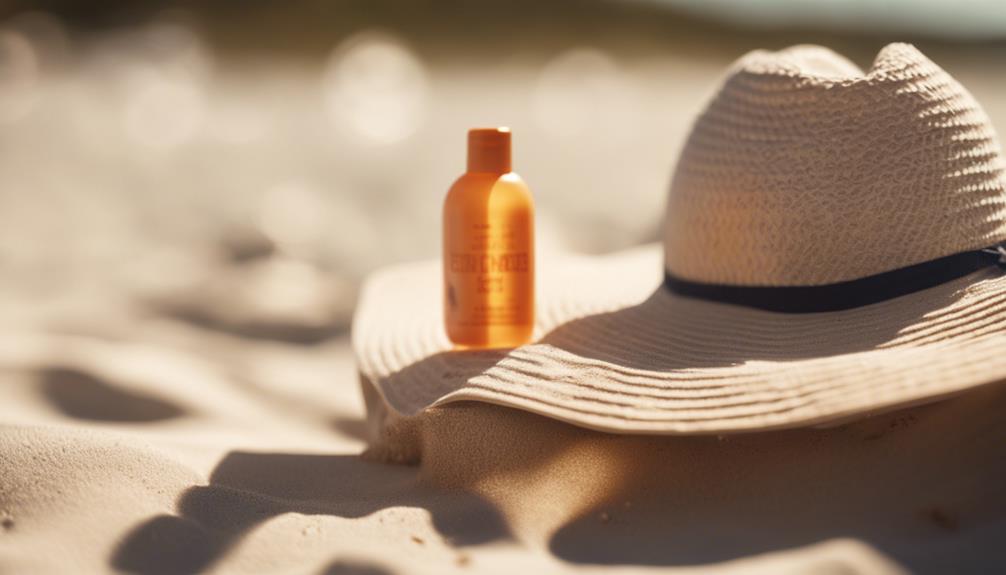To effectively remove tanning oil stains, it is important to act quickly. Start by blotting any excess oil with paper towels to prevent it from setting into the fabric. Then, apply liquid dish soap directly onto the stain and allow it to sit for 5-10 minutes before rinsing with cold water. For stubborn stains, you can use hot water as long as it is safe for the fabric, but always check the care label first. Keep an eye on the stain during the treatment process and avoid putting it in the dryer until you are certain that it is completely gone. Taking proactive steps to prevent stains can save you from future trouble. If you want to learn more about effectively maintaining your fabrics, click here for tips on unlocking the ultimate tanning bed experience. Remember to be cautious of potential spills or stains while enjoying your tanning sessions. Using a towel or cover can help protect your fabrics from tanning oil and ensure a stain-free experience. By following these simple guidelines and staying on top of stain prevention, you can preserve the quality of your fabrics and continue enjoying the ultimate tanning bed experience.
Key Takeaways
- Blot excess tanning oil immediately with paper towels to prevent the stain from setting into the fabric.
- Apply liquid dish soap directly onto the stain, gently rubbing it in before rinsing with cold water.
- Use hot water for stubborn stains, ensuring it's compatible with the fabric type according to the care label.
- Always air-dry or use a low heat setting in the dryer, checking for stain removal before drying completely.
Understanding Tanning Oil Stains
Tanning oil stains can be tricky to remove, especially if you don't act quickly to treat them.
Start by evaluating the fabric type, as different materials require unique cleaning approaches.
Check if the stain is fresh or has set in, and determine its size to decide whether you'll need spot treatment or professional help.
Inspect the stain as soon as possible, because timing is essential for effective removal.
Don't forget to review the care tag for any specific cleaning instructions.
Understanding these factors will help you tailor your cleaning strategy, increasing your chances of successfully erasing those stubborn tanning oil stains from your favorite garments.
Stay proactive and informed to tackle the issue head-on!
Initial Treatment Techniques
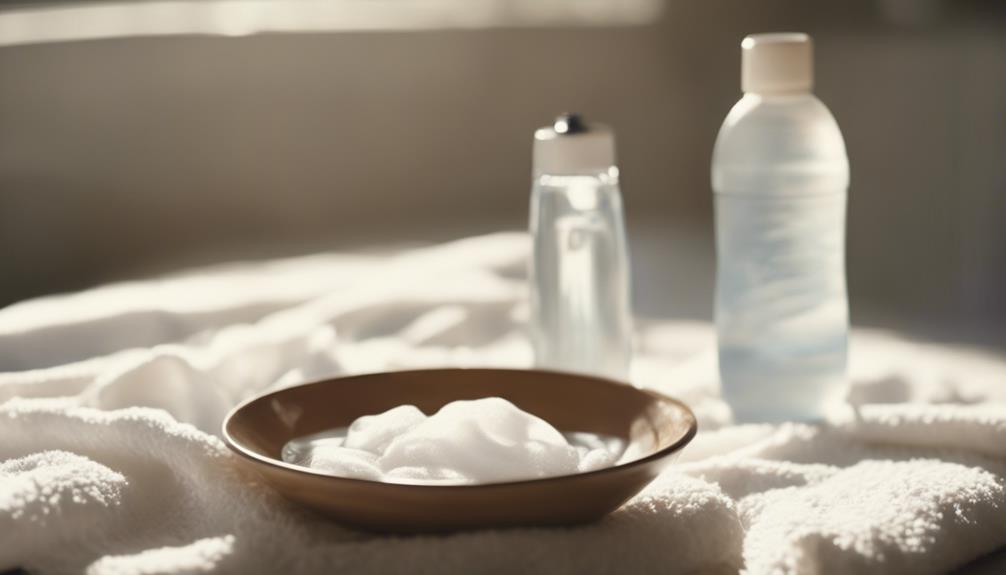
To effectively tackle tanning oil stains, act quickly to prevent them from setting by gently blotting the excess oil with paper towels.
Use clean towels and replace them frequently until no oil transfers.
Press down on the stain rather than rubbing it; this helps lift the oil without spreading it further.
Remember, maintaining a gentle touch is key to protecting your fabric from damage.
If the stain is large, focus on the center and work your way outward to minimize spread.
Avoid using colored towels, as they might transfer dye onto your fabric.
Pre-Treatment and Washing
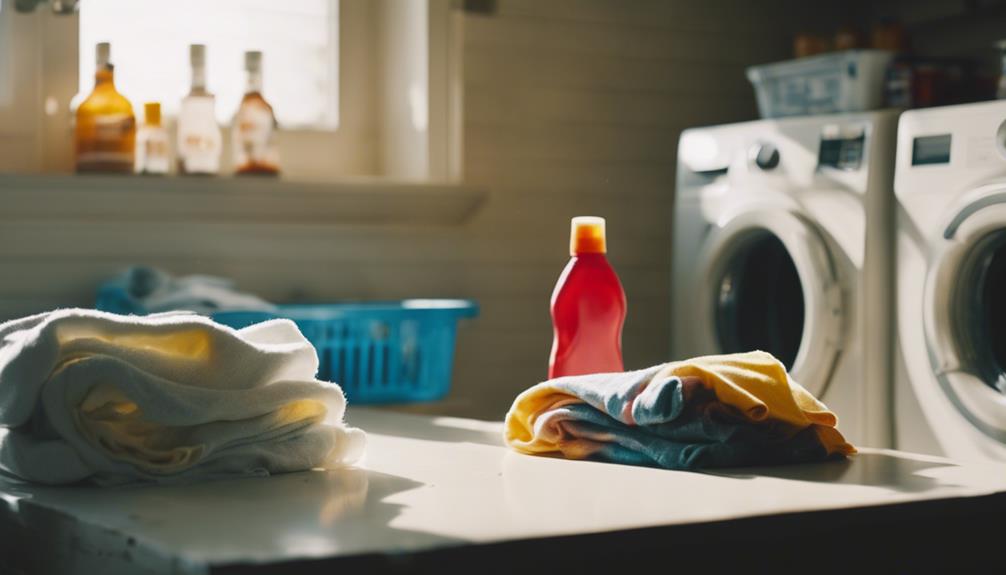
After you've blotted away the excess oil, it's time to tackle the stain with pre-treatment and washing techniques to guarantee effective removal.
Start by applying liquid dish soap directly onto the stain, gently rubbing it into the fabric. Let it sit for 5-10 minutes before rinsing thoroughly with cold water to remove any soap residue.
For stubborn oil stains, use hot water as it emulsifies grease effectively—just make certain your fabric can handle it.
- Check the care label for washing instructions.
- Conduct a spot check after the initial wash.
- Reapply stain remover and heavy-duty detergent if necessary.
Drying and Post-Treatment
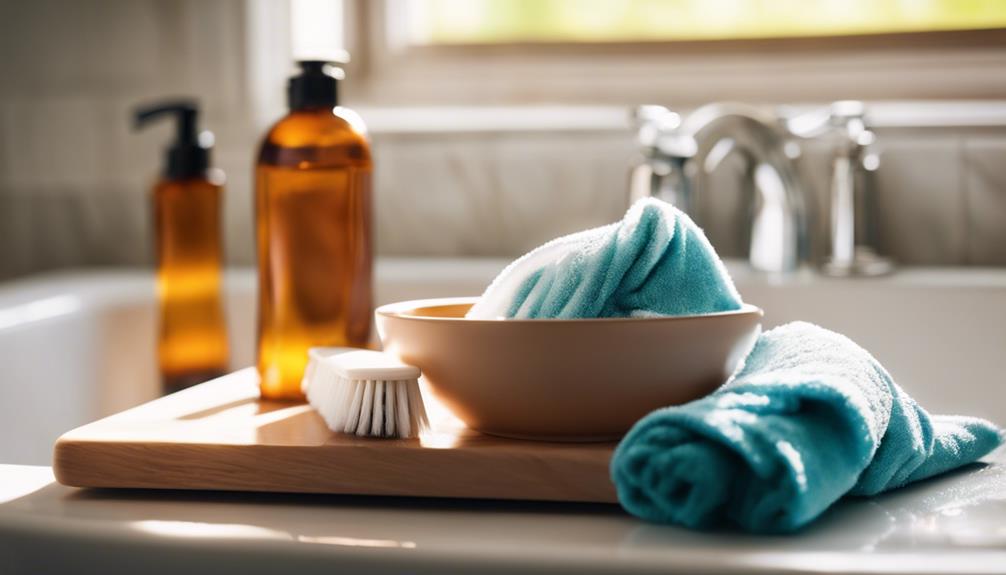
Typically, you should use a low heat setting in the dryer to safely dry your fabric, ensuring it aligns with the care tag instructions.
Monitor the drying process closely to prevent any damage, especially for delicate items. If you're unsure, air-drying is a great alternative—just shape and lay the fabric flat to maintain its form.
Before you toss your fabric in the dryer, inspect it one last time. If stains remain, repeat the washing process to boost your chances of complete removal.
Persistence is key; don't settle for anything less than a spotless outcome. After drying, check the fabric again to confirm the stain's gone. A little diligence goes a long way in preserving your favorite garments!
Prevention Strategies
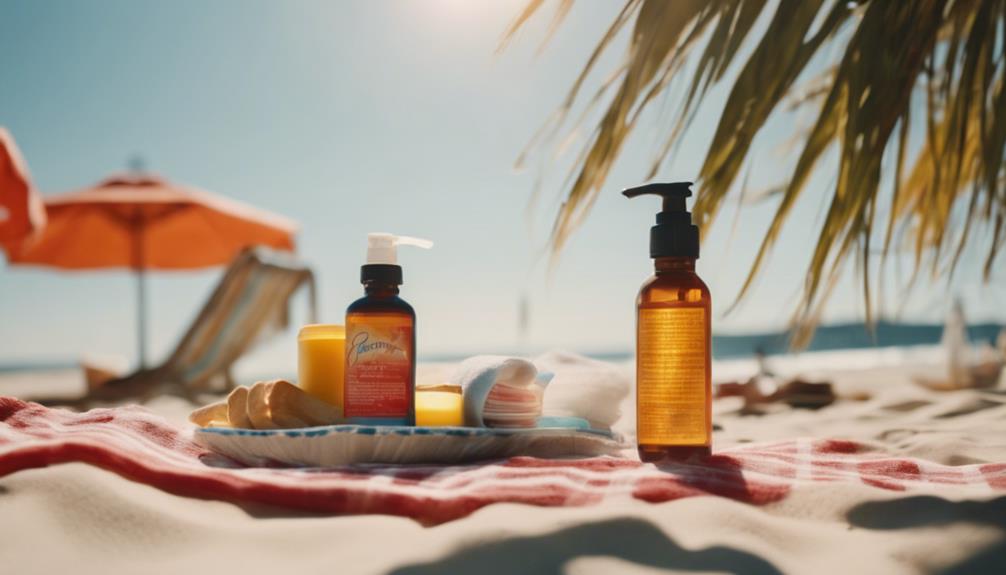
Keeping your favorite garments stain-free starts with smart prevention strategies that minimize the risk of tanning oil marks. By taking a few simple steps, you can enjoy the sun without worrying about unsightly stains on your clothes.
Here are some effective strategies:
- Apply tanning oil at least 15 minutes before getting dressed to allow it to absorb.
- Use a towel or cover-up as a protective barrier between your skin and your clothes.
- Opt for darker clothing to make any potential stains less visible.
Frequently Asked Questions
Can Tanning Oil Stains Damage Certain Fabric Types Permanently?
Yes, tanning oil stains can damage certain fabric types permanently if not treated quickly. Delicate fabrics like silk or rayon are particularly vulnerable, so it's essential you act fast to minimize potential harm.
What Are the Best Products for Removing Tanning Oil Stains?
Removing tanning oil stains is like battling a stubborn shadow. You'll find success with liquid dish soap, laundry detergent, or specialized stain removers. Just remember to act quickly and follow the fabric care instructions for best results.
How Can I Test Fabric Sensitivity Before Cleaning?
To test fabric sensitivity before cleaning, apply a small amount of your cleaning solution to an inconspicuous area. Wait for a few minutes, then check for discoloration or damage to verify it's safe to use.
Are There Professional Services That Specialize in Stain Removal?
Think of professional stain removal services as your fabric's superhero. Yes, there are specialists who tackle tough stains, providing expertise and advanced techniques that you might not have at home, ensuring your garments look their best again.
Can I Use Bleach on Tanning Oil Stains?
You shouldn't use bleach on tanning oil stains, as it can damage fabrics and worsen the stain. Instead, stick to gentle detergents and specific stain removers designed for oil-based stains for better results.
How Can I Prevent Tanning Oil Stains While Using a Tanning Bed?
To prevent tanning oil stains while using a tanning bed and achieve the ultimate tanning bed experience unlock, it’s essential to use a tanning bed mat or towel to protect the bed’s surface. Applying the tanning oil sparingly and evenly can also help minimize the risk of staining.
Conclusion
Just like a knight wouldn't venture into battle without his trusty sword, don't face your laundry day without these stain-fighting strategies!
Armed with the right techniques, you can conquer those pesky tanning oil stains and restore your favorite garments to their former glory.
Remember, with swift action and a bit of knowledge, you'll be the hero of your wardrobe.
So go forth, protect your clothes, and enjoy the sun without fear of those stubborn stains!
